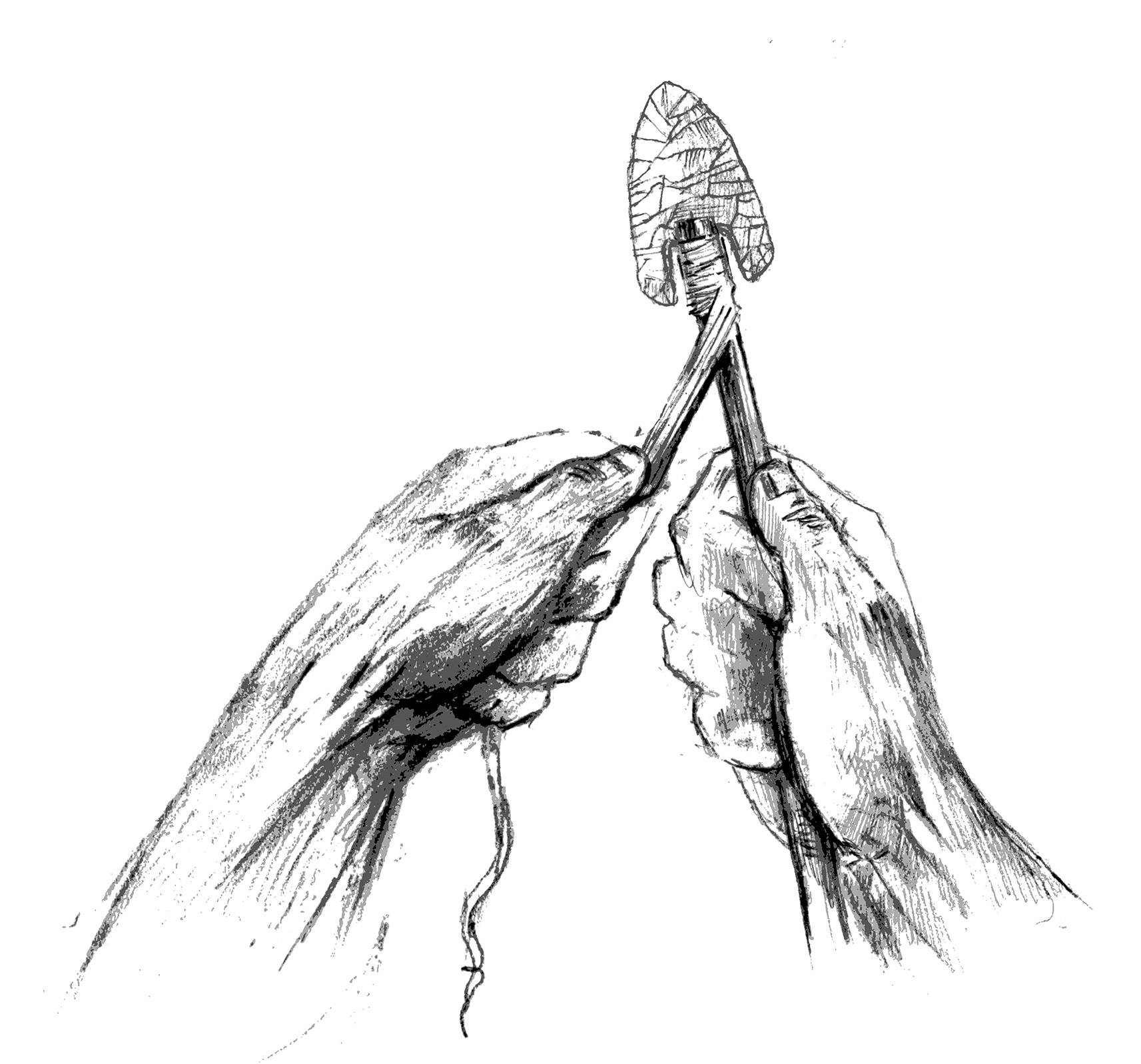The Calf Creek Horizon at Spring Lake
Dating from 6000-5750 years ago, the Calf Creek Horizon represents a relatively short period of time at the end of the Early Archaic, and marking the transition into the Middle Archaic. Many of the components for this period are found in disturbed contexts, sometimes due to natural processes such as erosion or bioturbation, and sometimes due to human activities such as agriculture, construction, or even pot-hunting and looting. Because of this, the Calf Creek Horizon is not well understood. The archaeological sites around Spring Lake have offered an invaluable collection of Calf Creek components in excellent context. These sites have allowed the archaeologists at the Center for Archaeological Studies an opportunity to greatly extend our understanding of this time period and the activities of the people who visited the area.
Subsistence
Hunters occupying the Spring Lake area during the Calf Creek Horizon appear to have focused their efforts on large mammals, especially bison, as well as antelope and deer. Part of the reason for this may have been a change in the overall climate in the region, which encouraged the extension of the short grass prairie favored by bison into Central Texas. The bison herds naturally spread into the new grassland. The bison, in turn, lead groups of people who preferred to hunt larger game into the area around Spring Lake. We know this because the Calf Creek Horizon occupation zones show a noticeable increase in animal remains from larger game animals -- bison, antelope and deer -- over previous and subsequent occupations. Both earlier and later occupations appear to have utilized a wider array of game animals including turtle, fish, and birds, which suggests that the period of grassland expansion was relatively short. Additionally, the Calf Creek components show an increase in the number of tools such as formal unifaces that were used in the processing of bison and deer hides. (Garber, et al.,1983; Lohse, et al., 2013)

2014 Spring Lake Data Recovery
To date, the excavation that has produced the best information about the Calf Creek Horizon as it is represented at Spring Lake is the Spring Lake Data Recovery project, sponsored by the City of San Marcos in the summer of 2014. To learn more about this project, click on the image above.
Lithic Tools
As mentioned above, the presence of distinctive projectile points such as Andice, Bell and Calf Creek points, is a major indicator of a Calf Creek Horizon component. Additionally, Calf Creek Horizon components show an increase in tools, such as unifacial scrapers and flake tools, that were commonly used for the processing of animal hides. Other patterns can be found in the distribution of lithic tools and debris, as well. For instance, compared to other components in the same location the Calf Creek Horizon component at Spring Lake tends to show relatively little evidence of the making of lithic tools. In fact, cores and early stage debitage (flakes) are noticeably absent from these components. This has lead researchers to suggest that the Calf Creek occupations in the Spring Lake area might have been very short, perhaps reflecting the camps of focused parties who entered the area specifically to hunt bison or other large game, process the meat and hides, and then return to their home territory. (Garber, et al.,1983; Lohse, et al., 2013)


